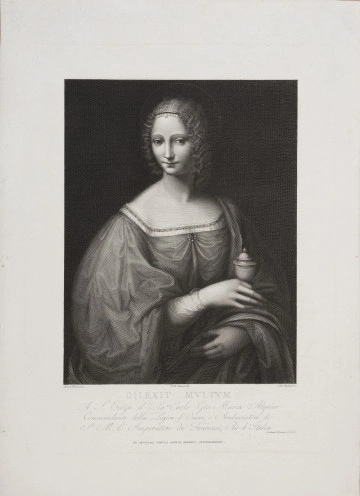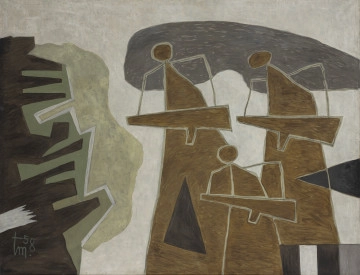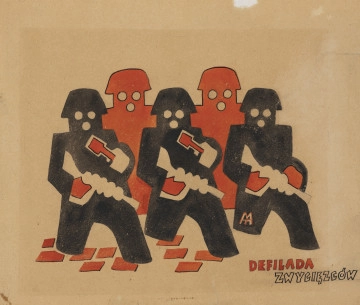
St. Mary Magdalene
1805 — 1814
National Museum in Szczecin
Part of the collection: Militaria
A small gunpowder box was found after World War 2 in ruins at the intersection of ul. Piłsudskiego and ul. Wyzwolenia in Szczecin. Only 100 years earlier, there had been fortifications of Bastion V and Fort Wilhelm. It was made of deer antler and its shape retains the natural form of a forked beam and tines Despite the damage to the lower holes and the absence of the metal fittings closing the gunpowder case, the obverse retains an interesting engraved decoration. It is a representation of a woman shown in full profile, walking with a chalice in her hand. The lady is dressed in a long Renaissance gown with wide sleeves and a skirt arranged in thick, regular folds. A bodice with a large neckline is worn over a shirt wrinkled at the neck. A short cape is draped over the figure's shoulders. The hair is secured at the back of the head and secured in a net, which is now barely visible as the engraving has been partially obliterated. Decorated powder boxes with representations of women or men were a typical feature of mid-16th century Germany. The depiction of a female figure with torches in the background and an attribute such as a chalice can be linked to representations of St. Barbara of Nicomedia, was the patron saint of a good death and hard work, and therefore considered the protector of miners, sailors or soldiers - including artillerymen and even gunsmiths. Made from a variety of durable materials such as wood, horn, antler, or iron, gunpowder boxes were used by armed cavalry and others. Firearms were also used by privileged members of the upper classes, whose elite pastime was hunting with a rifle. Both the weapon and the accessories needed to use it, i.e. gunpowder cases and pouches, were elaborately decorated at the time and testified to the prestige of the owner. Both the context in which the gunpowder case was found and the depiction on it can attest to its military purpose, but the quality of the decoration and the period in which it was made, years before the construction of fortifications in Szczecin, also speak very clearly for the latter role. Justyna Bądkowska
Author / creator
Object type
powder flask, military accessory
Technique
sculpture
Material
antlers
Origin / acquisition method
purchase
Creation time / dating
Creation / finding place
Owner
Muzeum Narodowe w Szczecinie
Identification number
Location / status

1805 — 1814
National Museum in Szczecin

1958
National Museum in Szczecin

między 1945 — 1947
National Museum in Szczecin
DISCOVER this TOPIC
Castle Museum in Łańcut
DISCOVER this PATH
Educational path